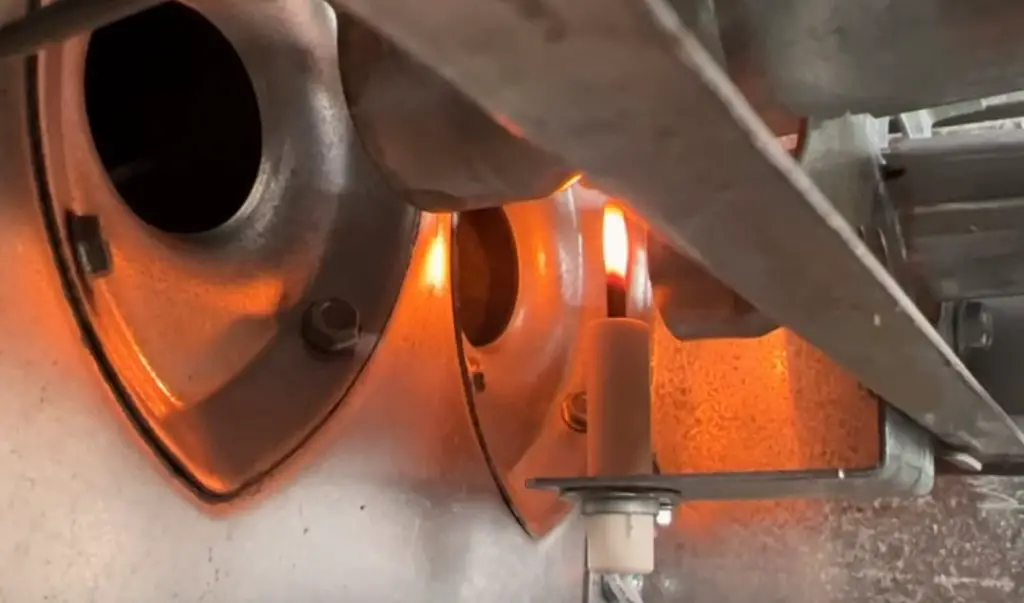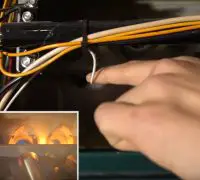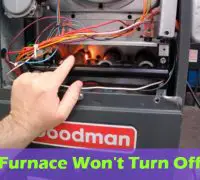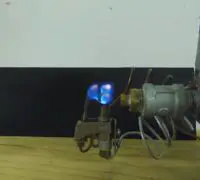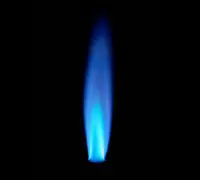Having problems with the furnace can be stressful, especially when the outside temperatures are really low. If the furnace pilot light is lit, but the burners seem unable to ignite, you find yourself in a pickle—for sure, something’s wrong with your furnace. Don’t hesitate to call an HVAC technician, as you can troubleshoot it yourself.
There are several reasons why the furnace won’t ignite, despite the pilot light being lit. Please keep reading as we go into the details.
Page Table of Contents
What are the possible causes for the furnace not to kick on when the pilot light is lit?
A failed automatic shut-off, a defective valve, and a rusty thermocouple are reasons why a furnace won’t kick on when the pilot light is lit. Sometimes, the pilot light will light, but the burners will remain dead, so that the situations can vary greatly.
We recommend you review the information below to understand why the furnace burner doesn’t ignite correctly while the pilot light is lit.
Take a look at the ignition sensor
The ignition sensor will need assistance when the pilot light is lit and the burners won’t ignite. If the sensor is dirty, the furnace won’t be able to remain on and could even start blowing cold air. Your furnace follows specific steps to heat the air inside the house. When the furnace’s heat exchanger (the component that heats the air) senses an ignition, it will inform the furnace and power it.
However, if the ignition sensor is dirty or covered in grime, it won’t be able to perform correctly. It’s a problem that requires attention from a certified HVAC technician. He will examine and replace the dirty ignition sensor. If cleaning is enough, he will do it without altering the sensor’s operation.
The igniter is defective
Most of the time, the igniter becomes defective when it’s corroded or damaged. If the igniter doesn’t spark, it could be because it doesn’t get enough power. Dead or faulty batteries are common reasons the igniter isn’t performing correctly. In time, the batteries in the igniter will lose their charge and be unable to give the power to create a spark.
Another cause may be defective wiring between the igniter and the batteries. The wire can wear out in time and will make the igniter stop working if not changed.
If the furnace’s igniter is defective, you can attempt to replace it. Make sure you get the correct model for the furnace before you proceed with replacing the igniter. Start by disconnecting the power to the furnace for safety reasons. Follow these steps to replace your furnace’s igniter:
- Remove the old igniter
Begin with removing the screws that keep the current igniter in place. Pull it out carefully so that you don’t cause any damage to the surrounding wires or parts.
- Set up the new igniter
Place the new igniter in the same place as the rusty one and use the screws to secure it. Don’t overtighten the screws because you risk damaging the igniter.
- Reconnect any disconnected wires
After you set the new igniter in place, reconnect any disconnected wires.
- Test the new igniter
Don’t put the furnace back together until you test the new igniter. Turn on the furnace and see if the igniter glows brightly. A bright light means you’ve done a great job. Otherwise, you need to go back and repeat the installation.
- Put the furnace back together
After testing the new igniter and seeing that it’s done correctly, you can put the furnace back together. Put back in place all panels and covers that you have removed and tighten all screws securely.
- Reset the furnace
Now that the furnace is back in its place, you have to reset it. Please go over the user manual for instructions and follow them accordingly. Typically, you will need to turn off the power to the furnace, wait for several minutes and end by turning the furnace back on.
- Test the furnace
With your furnace reset, you have to test it to make sure it’s working correctly. Turn on the power and set the thermostat to a comfortable temperature.
Examine the furnace pilot light
If you notice that the furnace’s pilot light doesn’t turn off and the burners don’t ignite, you can try running the furnace by switching its power on and off. If the furnace doesn’t stay turned on after you reset the pilot, you need to power down the furnace and check out the element for damage.
When none of these fixes work, you should contact a professional. He will run a gas furnace maintenance. Needless to say, you should never postpone furnace servicing—gas supplies can pose a risk to your health and life!
The thermostat is set too low
Sometimes, the furnace doesn’t kick in because the thermostat is set too low. The thermostat’s purpose is to inform the furnace to turn on and off according to the room’s temperature. When the thermostat is set below room temperature, it will not command the furnace to turn on.
See the electrical panel
If the gas furnace’s pilot light is functional and stays lit, but the burners don’t, you have to examine the circuit breaker panels and the furnace itself. They should be in the “ON” position. It’s not always a severe malfunction causing the problem; easy fixes are possible too!
However, it would help if you popped them back into place when the breaker panels aren’t in the ON position. Do it carefully and close the furnace door so that the safety switch will start the furnace.
The gas control valve might be faulty
When the gas control valve of the furnace doesn’t perform as it should, the furnace won’t ignite. Since the gas control valve is defective, the primary burner won’t be able to light. The electronics in the valve will no longer be able to detect whether the pilot light is lit. Unless you are an HVAC technician, you won’t be able to fix the issue with the gas control valve.
Even if there are serviceable parts, most of the time, you will have to replace the entire assembly.
Examine the burner line and jet
You don’t necessarily need to replace the entire unit. You must check out the main burner, line, and jet first. Typically, the main burner doesn’t ignite if the line and jet are covered with debris, dirt, and dust. As they are probably corroded, you must first remove the burner from the water heater. Continue with examining the line and jet closely.
Most furnaces come with an access panel that allows you to access the burner to clean it. If you notice the burner and the jet covered with rust, you can clean them on your own. Use an air compressor and blow the rust and corrosion away. If you don’t clean the burner from time to time, it will get clogged with soot and stop working.
Maybe the automatic vent is closed
Most furnaces feature vents. When the vents remain closed, the furnace won’t ignite. Commonly, the gas burners feature two switches: a flame roll-out switch and a flue gas spill switch. The main burner won’t light if any of them get defective.
If the furnace doesn’t run even though the pilot light is lit, you need to check out the automatic vents of the burner; they should be open. Opening the vents is an easy fix if that’s the cause of the furnace’s inadequate operation. You also need to take a look at the switches in the furnace. If they don’t operate correctly, you must replace them with new ones.
The thermocouple might be rusty
The furnace won’t light when the thermocouple is rusty or covered with corrosion. A corroded thermocouple can alter the temperature and not allow the burner to perform correctly.
Cleaning the thermocouple with a vacuum is easy, as you will remove the rust and corrosion. Use a vacuum with a brush attachment to efficiently and safely remove dirt and debris on and around the thermocouple. Please be careful, as the burner area will be hot.
You shouldn’t just go ahead and vacuum the thermocouple but wait until the unit is entirely cool. If not, you risk burns on your skin and a fire hazard.
If the cleaning isn’t successful, you will probably need to replace the thermocouple. It’s not a sure thing that cleaning the thermocouple will make the furnace ignite.
